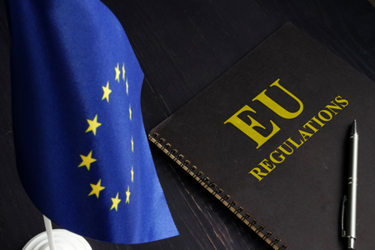PMS And Supply Chain Visibility For EU Compliance
By Matt Burton, strategic development director, IMed Consultancy

The updated requirements for post-market surveillance (PMS) under the EU Medical Device Regulation (MDR), EU In Vitro Diagnostics Regulation (IVDR), and the U.K.'s forthcoming Statutory Instrument (SI) have significantly raised the bar for medical device manufacturers and their ecosystems. With the primary aim of safeguarding patient safety, these frameworks place a substantial reporting responsibility on manufacturers and their supply chains. Yet, one area often overlooked in PMS planning is the role of the supply chain – a critical gap that, if addressed, can yield benefits for both compliance and patient safety.
The Growing Importance Of PMS
PMS requirements now encompass ongoing systematic procedures to monitor the real-world safety and performance of medical devices. This includes proactively collecting, analyzing, and acting on post-market data throughout a device’s life cycle. Beyond mitigating patient risk, PMS serves as a tool for continuous improvement, enabling manufacturers to identify emerging risks, optimize product design, and meet diverse regulatory standards across jurisdictions.
PMS is often seen as an expensive necessity that takes away resources and contributes only in so far as it allows a business to say they have ticked a specific regulatory box. In reality, a well-planned and consistently managed cyclical process can save time and money.
PMS And Supply Chain Accountability
One often overlooked area of PMS tends to be the supply chain. Manufacturers have the obligation to report on their device’s performance in the real world but too often they focus on actors’ roles and they neglect to consider other stakeholders, like suppliers, in the feedback and reporting process. Sometimes they fail to formalize supplier contributions to this effort within contractual agreements.
Suppliers, distributors, and importers have legally defined roles under EU MDR and IVDR, such as maintaining complaint registers and cooperating with authorities on recalls and non-conforming devices. Yet, third-party logistics (3PL) providers, who are often responsible for delivering devices to end users, frequently fall outside the scope of formal PMS agreements.
Manufacturers must therefore ensure that supply chain partners, including 3PL providers, are contractually required to support PMS processes, sharing customer feedback, complaints, and data that can inform safety and performance evaluations. Without this collaboration, critical insights may be missed, leaving manufacturers exposed to compliance risks and potentially undermining patient safety.
Aligning PMS With Strategic Goals
Embracing PMS as a strategic opportunity rather than a regulatory burden can be a game changer for manufacturers. Well-structured PMS processes allow them to streamline reporting cycles, integrate advanced tools like AI for data analysis, and align regulatory efforts across multiple jurisdictions. For instance, by coordinating PMS reporting with other compliance activities like clinical evaluation reports (CERs) or performance evaluation reports (PERs), manufacturers can reduce redundant work and make the most of available resources.
Developing a centralized PMS framework also enables manufacturers to meet regulatory standards in multiple geographies while avoiding duplication of effort. In fact, for a portfolio spanning multiple jurisdictions, it is possible to streamline top-level PMS efforts by analyzing what is required by each market and leveraging potential crossover of standards and country-specific laws.
Preparing For Evolving Regulatory Landscapes
Medical device regulations are constantly evolving to adapt to new requirements and innovation in the sector. With the U.K.’s new PMS Statutory Instrument coming into effect on June 16, 2025, manufacturers must be ready to navigate evolving requirements. Additionally, the new EU Directive on Liability for Defective Products (PLD), effective December 2026, will introduce stricter accountability standards for manufacturers. Under this directive, PMS data will play a pivotal role in substantiating product safety and defending against liability claims, particularly as the burden of proof increasingly shifts to the manufacturer.
Furthermore, since January 10, 2025, the new Regulation (EU) 2024/1860 requires medical device manufacturers to report any discontinuations and/or predicted supply interruptions at least six months in advance to the following:
- Any economic operators
- Health institutions
- Healthcare professionals who receive the devices directly from manufacturers
Therefore, now is the perfect time to review procedures and agreements and to improve upon internal PMS processes. A centralized and streamlined PMS strategy can help manufacturers quickly adapt to this changing landscape, while also taking into consideration key differences between regulations, such as, for example, variations in definitions of “incident” and “preventive action” in the U.K. and EU frameworks.
Effective PMS is therefore no longer just about ticking regulatory boxes; it is a cornerstone of patient safety and business resilience. By prioritizing supply chain visibility, integrating robust PMS frameworks, and leveraging all sources of PMS data, including indirect ones such as social media or customer feedback channels, medical device manufacturers can not only meet compliance requirements and protect patient safety but also drive innovation and protect their market position. As the regulatory environment continues to evolve, those who invest in proactive, collaborative PMS strategies with a special focus on supply chain will be best positioned to thrive.
About The Author:
 Matthew Burton is strategic development director at IMed Consultancy. A former organic chemist, Burton transitioned into consultancy, specializing in pharmaceutical development and registrations. He then became an MHRA registered Responsible Person for GDP and a lead auditor (GxP/ISO), managing projects for innovator and generic drug products. Following his passion for medical devices, Burton became a medical device consultant, delivering projects covering medical devices, borderlines, human tissues, biocides, PPE, and cosmetics products. During the SARS-CoV-2 pandemic, he advised NHS Innovation teams on product compliance. As IMed Consultancy’s strategic development director and a principal consultant, Burton oversees Representation Services (UKRP, EUAR, PRRC) and supports clients with strategic advice, regulatory support, and team mentoring.
Matthew Burton is strategic development director at IMed Consultancy. A former organic chemist, Burton transitioned into consultancy, specializing in pharmaceutical development and registrations. He then became an MHRA registered Responsible Person for GDP and a lead auditor (GxP/ISO), managing projects for innovator and generic drug products. Following his passion for medical devices, Burton became a medical device consultant, delivering projects covering medical devices, borderlines, human tissues, biocides, PPE, and cosmetics products. During the SARS-CoV-2 pandemic, he advised NHS Innovation teams on product compliance. As IMed Consultancy’s strategic development director and a principal consultant, Burton oversees Representation Services (UKRP, EUAR, PRRC) and supports clients with strategic advice, regulatory support, and team mentoring.
